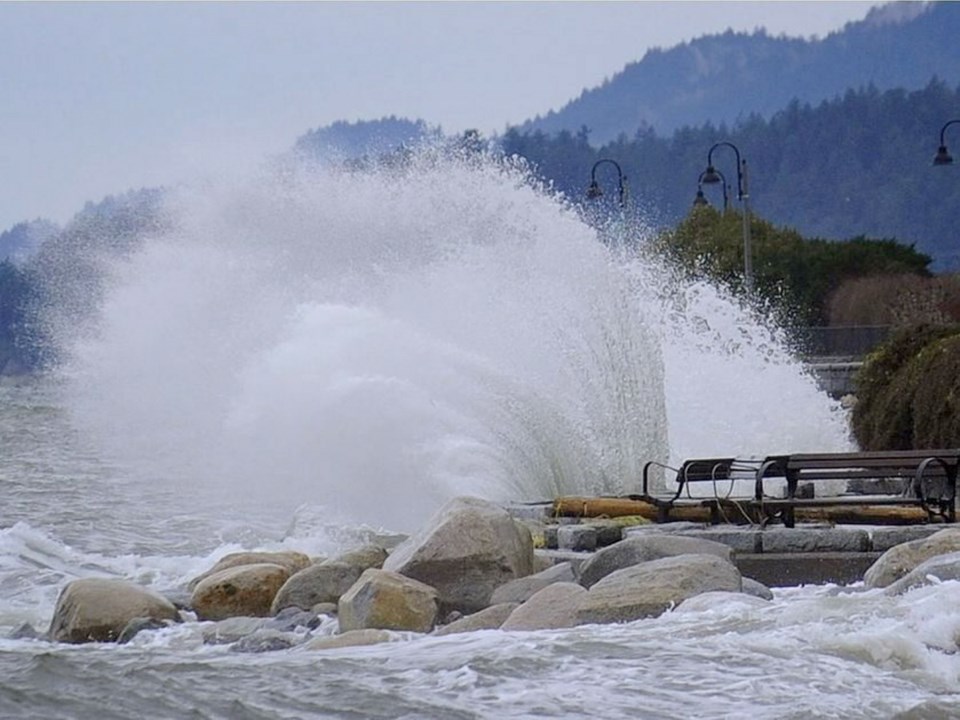A flood of king tides over the past week offered plenty of opportunity to snap photos of the ocean lapping just steps away from some iconic Metro Vancouver spots.
But it also offered a reminder of what the future holds, with sea levels expected to rise over the next century.
“This is a preview of the future, absolutely,” Simon Donner, a University of B.C. climate researcher said Sunday.
“The best way to describe it is it takes an astronomical king tide to get flooding in Stanley Park, Kits Beach, parts of Surrey’s coastline and elsewhere.
“In the future, it won’t.”
Because of the quantity of carbon dioxide already in the atmosphere, Donner added, some sea level rise is inevitable, no matter what happens to global carbon emissions over the coming years.
Those rising levels of carbon dioxide are already having an impact on global temperature and is leading to higher rates of melting of the world’s glaciers and ice sheets. The melt-off from those fields of ice ends up in the ocean.
NASA says the world’s oceans have risen more than 80 millimetres since 1980, nearly 200 millimetres since the beginning of the industrial age in the second half of the 19th Century.
Governments and communities need to start preparing for that future now, Donner said.
“The impacts of sea level rise are things that the region are not going to be able to avoid. A lot is going to happen regardless because it’s already baked into the system.”
That means designing shoreline infrastructure with higher sea levels in mind. We’re already seeing sandbags being put in place to protect against shoreline flooding in locales like Kits Beach and Stanley Park, but more permanent solutions are needed.
Some municipalities in Metro Vancouver, like Vancouver and North Vancouver, have been rather proactive, Donner said. A December 2014 report by the city of Vancouver assumes the ocean will rise 1 metre between the years 2000 and 2100.
A 2012 study by the provincial government estimates at least $9.4 billion will need to be spent to adapt infrastructure to deal just with heightened threats of flooding.
Obvious shoreline areas like False Creek, Ambleside, Crescent Beach or most of Richmond and Delta are at risk from rising sea levels — but so are large areas of Coquitlam, Abbotsford and Chilliwack.
Roads and homes in Crescent Beach are being rebuilt, for example, to reflect the future rising of the water line, but in a region which is literally surrounded by water, much more planning is needed.
“The problem is that it’s not being done everywhere in the region,” Donner said.
“A lot can be done about how we design seawalls,” he said. “Building physical barriers can be done. They need to look into intelligent (engineering) design. We’re going to need to re-design roads.”
“Also trying to work with nature as much as possible, like preserving coastal wetlands.”



